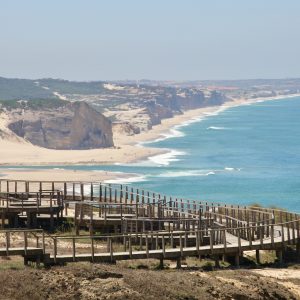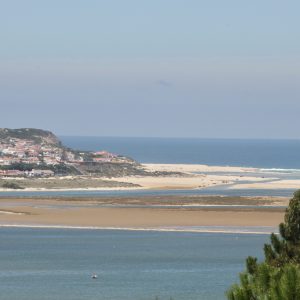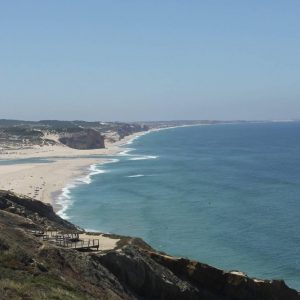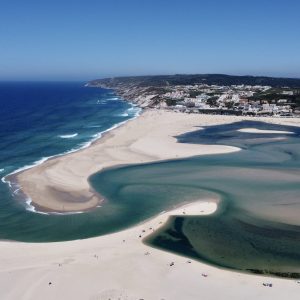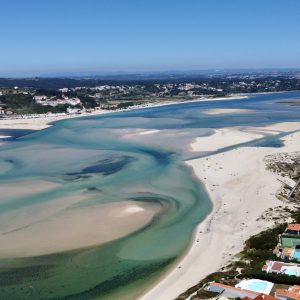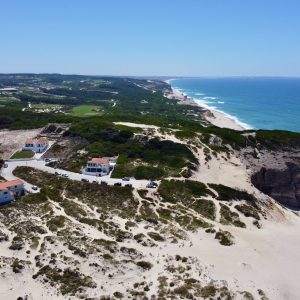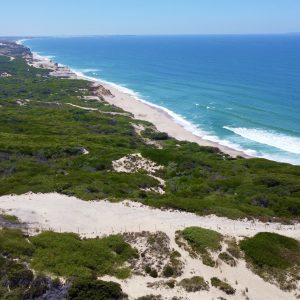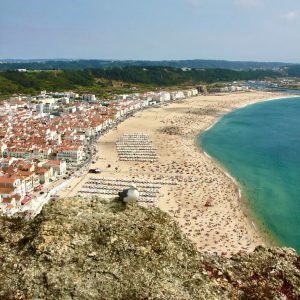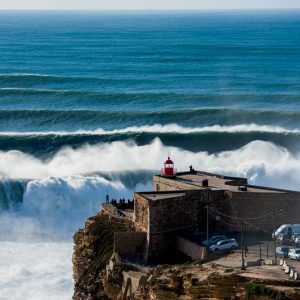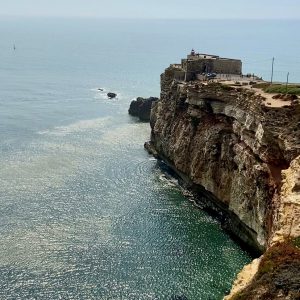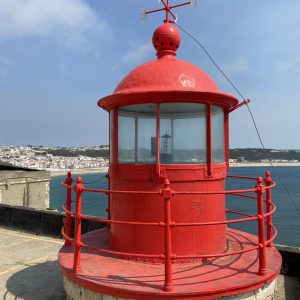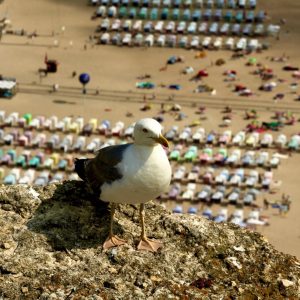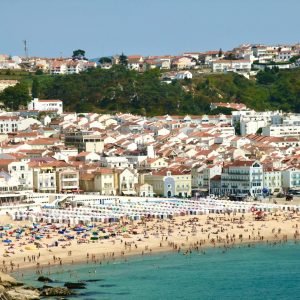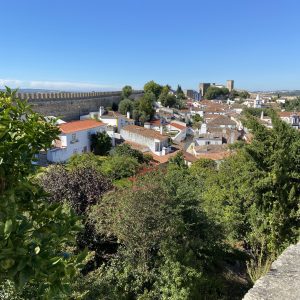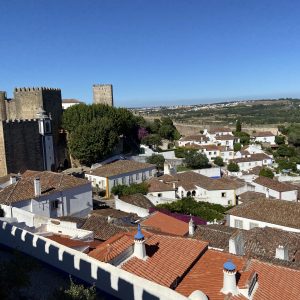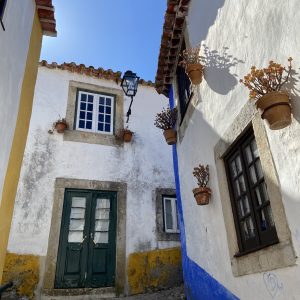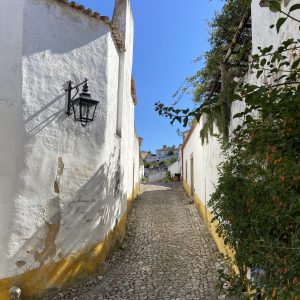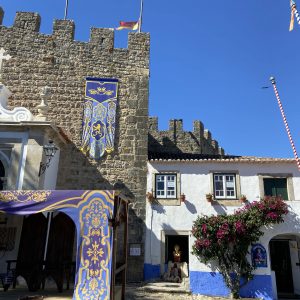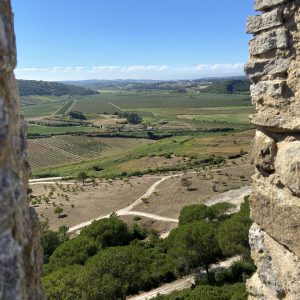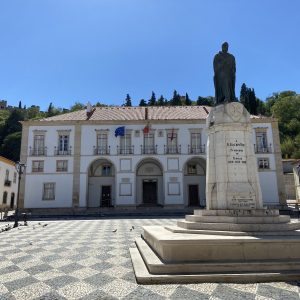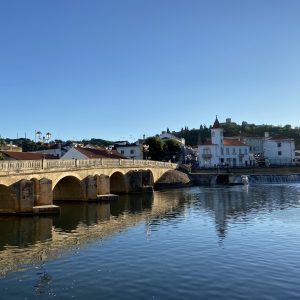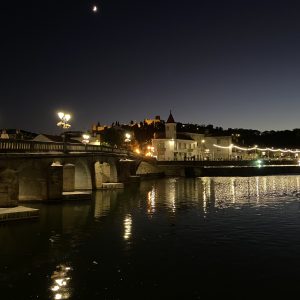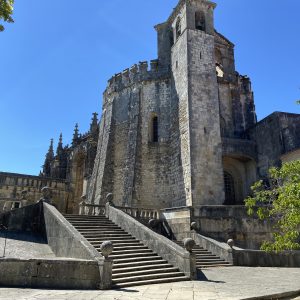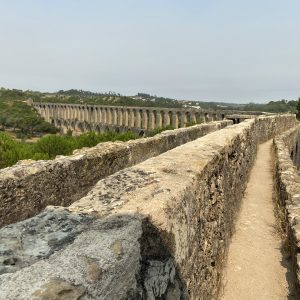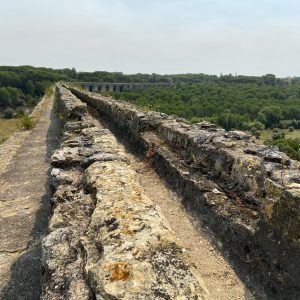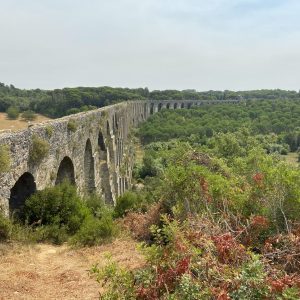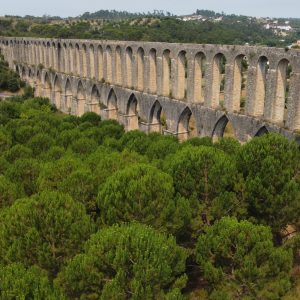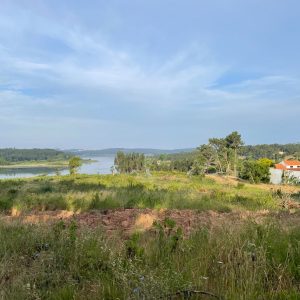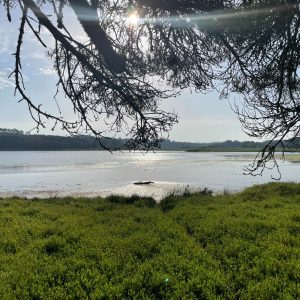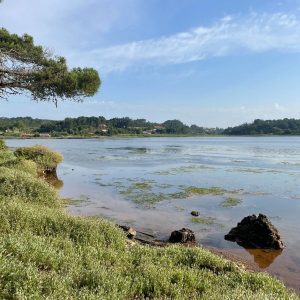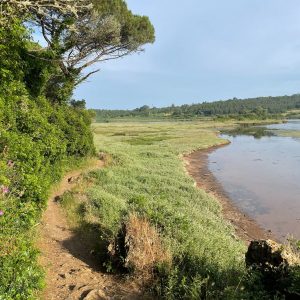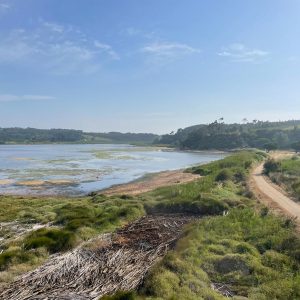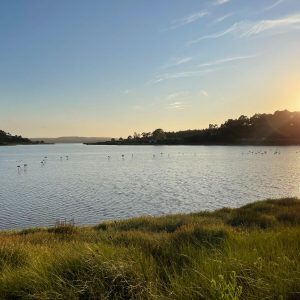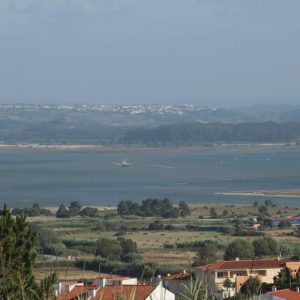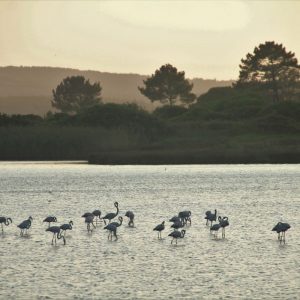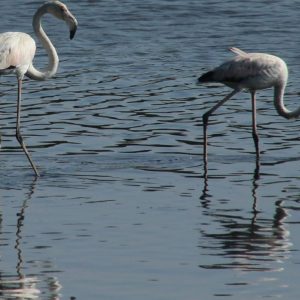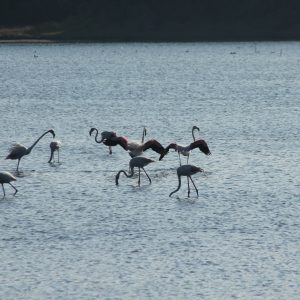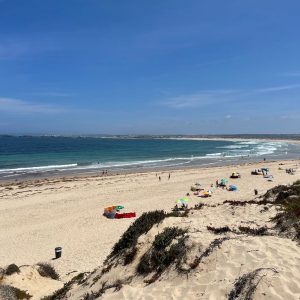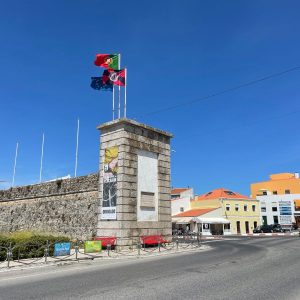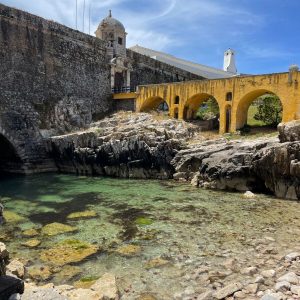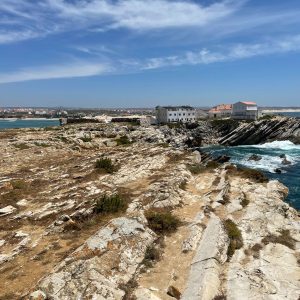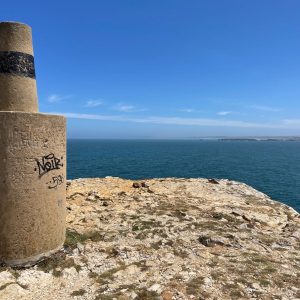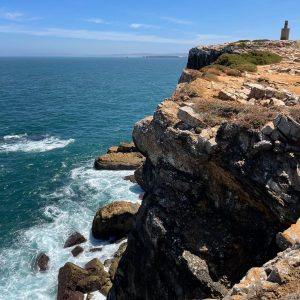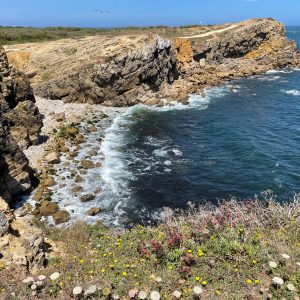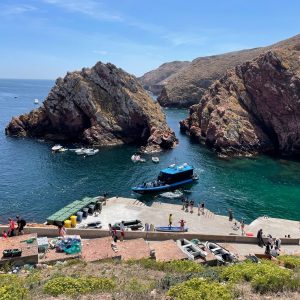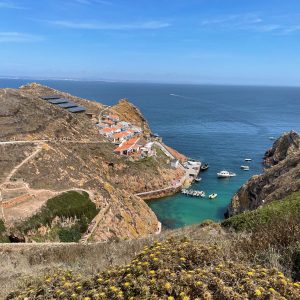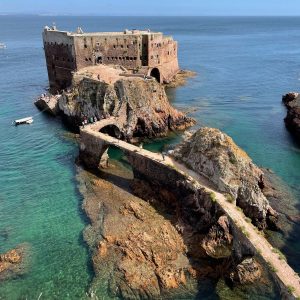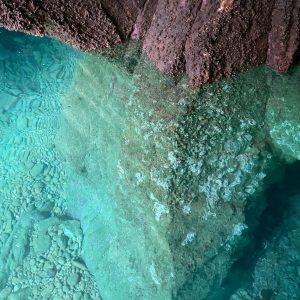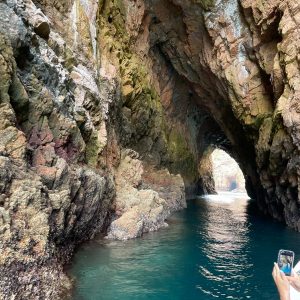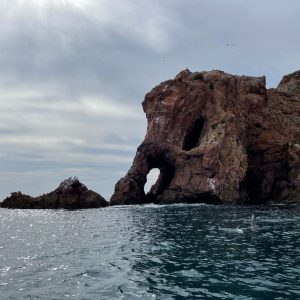Foz do Arelho
At the confluence of the Lagoa de Óbidos lagoon with the sea, the mouth of Foz do Arelho offers the opportunity to choose from two different beach types. On one side there is the lagoon, a beautiful location with lush banks. The water is calm and ideal for children and for windsurfing. The wind that is normal here is also very favorable for that. On the other side is the beach by the sea. The sea has waves, but no large currents. It offers excellent surfing conditions and has the blue flag, which testifies to the quality of the water.
Nazaré
Nazaré beach, with its mild climate and natural beauty, preserves one of the oldest fishing traditions in Portugal. There is a long sickle-shaped beach with white sand where the city borders the sea and is known for its brightly colored beach bars. On Saturday in the months of May and June you can watch an interesting spectacle on the beach at night: the “arte xávega”. Nets full of fish arrive from the sea, while the women scream the catches of the day. When in Nazaré, it is especially recommended to head towards the lighthouse: located in the Sítio district, this high vantage point is a wonderful place to look out over the city, but what makes the place particularly interesting is the possibility to see the gigantic waves around Nazaré The waves can become so high here that this town has even become part of the surf world tour To imagine how high the waves actually are: on the beach Praia do Norte surfer Garrett McNamara broke the guinness world record in 2011 by surfing a wave over 23 meters high!
Óbidos
The oldest part of Óbidos, which is still completely walled, is a major attraction in its entirety. The Castle (Castelo de Óbidos) from the 12th century is located in this walled city area. Very typical are the whitewashed houses, almost all of which are outlined with blue, red or yellow stripes. It is very cozy in the streets (and relatively fresh in warm periods). From the ramparts you not only have a spectacular view of the old town, but also of the surrounding area.
Tomar
The city of Tomar is dominated by the 12th century castle with the Convente de Cristo. The Templars made Tomar their headquarters and built this castle. The Convent of Christ (Portuguese: Convento de Cristo / Mosteiro de Cristo) is a former Roman Catholic monastery in Tomar, Portugal. Originally a 12th-century Templar stronghold, when the order was dissolved in the 14th century, the Portuguese branch was converted into the Knights of the Order of Christ, who later supported Portugal's maritime discoveries in the 15th century. The monastery and castle complex is a historical and cultural monument and was listed as a UNESCO World Heritage Site in 1983.
Just outside Tomar is the Aqueduto dos Pegões. About 6 km long and formed by 180 arches, the Pegões Aqueduct was one of the most important public works built in Portugal in the 17th century. This monumental work was designed by the eminent architect Filipe Terzi, to supply the Monastery of Christ with water - it connects the monastery with the village of Pegões on the outskirts of Tomar, where there were four natural springs.
This aqueduct - one of the largest and most impressive in Portugal - consists of simple arches, with a double layer of arches in the deepest zones, up to a maximum height of 30 meters.
Peniche
Peniche is inextricably linked to the sea. It is one of the main Portuguese fishing ports for artisanal fishing and a major water sports center on the Atlantic Ocean. Before going to the beach, be sure to visit the historic center. Next to the Sanctuary Nossa Senhora dos Remédios, the churches Igreja de São Pedro and Igreja da Misericórdia, you will find the Forte de Peniche. This fortress was built in the 16th/17th century to defend the coast together with the fortress of Praia da Consolação and the fortress of Ilha das Berlengas. It has played an important role in the history of Portugal at various times. Fishing has of course always been one of the main sources of income of this town. However, Peniche is also known for the lace that the women made while the men were at sea. The sea is still one of the main attractions and the beaches of Peniche are a major draw. In addition, there are various rock formations where you can walk nicely.
Berlengas islands
A boat trip away from Peniche is the nature reserve of Ilha das Berlengas. The clear waters are ideal for divers to discover a wealth of natural marine fauna and flora. The wild sea and the seclusion of the island are also a source of mysterious tales of fishermen and boats that sank off the coast here. The gastronomic specialties here are of course also dominated by the sea. The boat trip to the islands is often rough due to the high waves that are often there due to the strong north wind.

